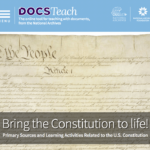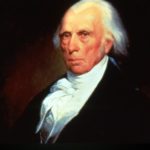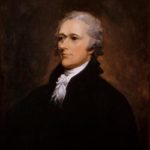The U.S. Constitution grants the President the power to appoint people to a variety of government positions. These appointments require careful thought and consideration since the people can have a great impact on the lives of many Americans during that President’s term. Some appointments need even greater thought and consideration, and those are to the federal judicial system and more importantly, to the Supreme Court of the United States. Justices of the Supreme Court (and other federal courts) serve lifetime appointments. Their rulings as they interpret the Constitution, and other situations as outlined in Article III of the Constitution, can have far-reaching effects for generations. With this awesome power to appoint comes an equally awesome responsibility to make sure that the individuals are the best people for the job. In this lesson, students will examine the appointment of Supreme Court Justice Sandra Day O’Connor, who was also the first female Justice. Students will examine the process by which a President makes the selection and the steps that lead to that person being confirmed by the Senate (or not).
Bring the Constitution to Life!

Locate primary sources from the holdings of the National Archives related to such topics as “checks and balances,” “representative government,” all 27 amendments, and other concepts found in the Constitution. This special home page devoted to the U.S. Constitution also features activities to share with students, such as “The Constitution at Work,” which uses primary sources to demonstrate the Constitution in action in our everyday lives.
A Conversation on Judicial Interpretation
Justices Stephen G. Breyer and Antonin Scalia and a group of students discuss the different theories, primarily Originalism vs. The Living Constitution, of how to interpret and apply the Constitution to cases. A PDF lesson guide accompanies this video
James Madison and the Constitution

This video highlights James Madison’s talents both as a creative thinker as well as someone with practical experiences in governing. Madison was the longest-lived of the Founding generation and had years after ratification to think about what it takes to make a Constitution work. Professor Jack Rakove notes that Madison lived long enough to hear questions raised about the Constitution’s origins (we, the people? Or we, the states?) and to anticipate the dissolution of the union he created.
The Constitutional Convention: Creating an Executive
History is the chronicle of choices made by actors/agents/protagonists in specific contexts. This simulation places students at the Constitutional Convention and asks them to explore one of the fundamental quandaries faced by the framers: how to create an executive branch that lacked monarchical prerogatives yet could make the government function more efficiently. By discussing and debating the various options, students will gain a deeper understanding of the choices the framers faced and why they opted for particular structures, ones we live with today.
The Constitutional Convention: Composition of Congress
History is the chronicle of choices made by actors/agents/protagonists in specific contexts. This simulation places students at the Constitutional Convention and asks them to construct a legislative branch for a proposed new government. Should there be one branch or two? Should each state get an equal voice in the legislative branch? By discussing and debating the various options, they will gain a deeper understanding of the choices the framers faced and why they opted for particular structures, ones we live with today.
Landmark Supreme Court Cases
When the stories of We the People become cases before the U.S. Supreme Court, and when those cases result in the opinions of the Court, history turns. The ways we think about and live under the Constitution are reflected in the Court’s interpretations in both their historical contexts and their legacies. Some cases — and the Court’s opinions in them — so profoundly alter our constitutional understandings that they can only rightly be called Landmark Cases, markers of where we have traveled as a nation. In this way, the Landmark Cases show us what we have tried, where we have been, and where we are — leaving We the People and future sessions of the Supreme Court to determine how we move forward toward a more perfect union.
Provide for the General Welfare – Interstate Highway and Defense Act
In the Constitution, Congress is charged with providing for the general welfare of the country’s
citizens. Historically, this has meant improving transportation, promoting agriculture
and industry, protecting health and the environment and seeking ways to solve social and
economic problems. In 1956, Congress passed the Federal-Aid Highway Act, popularly known as the National Interstate and Defense Highways Act, authorizing federal funding for the extension and
construction of a robust network of interstate highways. This project was one of the largest public
works in U.S. history establishing key transportation infrastructure that impacted lives of all
Americans — changing communities, access and economic possibilities and also providing key
routes for evacuating urban centers — a critical national defense issue in the Cold War era.
Analyzing primary source material, students discuss the origins and reasons for the National
Interstate and Defense Highways Act. Then, they work with historical and contemporary maps
as they consider the impact this important congressionally funded project. While intended for 8th
grade students, the lesson can be adapted for other grade levels.
Supreme Court Cases On Display
The purpose of this lesson is to have students working in groups of two or three focus of one historic Supreme Court case. Students will understand the process of bringing a case to the Supreme Court, read arguments and discover the importance of this third branch of government. Students will discover the changes these cases made in the lives of people. Then students can determine how the outcome may have affected their lives.
Use Constituting America’s Constitution Archives on U.S. Supreme Court Cases and Justices to support this lesson.
Fame and the Founders

This short video explores the Founders’ understanding of fame. As understood by men like Alexander Hamilton, the pursuit of fame in the 18th century meant the desire to live an honorable life of public service. Professional Daniel Dreisbach presents a clear contrast between the 18th and 21st century’s notion of fame.